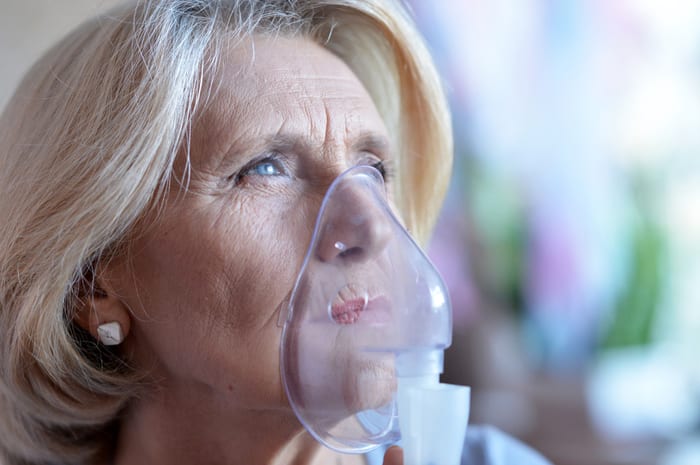New Advances in COPD Treatments Could Be A Game-changer
Here’s a staggering figure: More than 12 million Americans live with Chronic Obstructive Pulmonary Disease (COPD). Here’s an even more staggering figure: As many as 12 million more Americans likely live with COPD and don’t realize it. COPD is the third-leading cause of death in the United States — to change this statistic and get the medical attention you may need, it’s important to understand the disease itself.

What is COPD?
COPD is a disease that obstructs the airways of the respiratory system. It is made up of several chronic breathing disorders, such as asthma, chronic bronchitis or emphysema. Primarily caused by smoking, COPD can also be linked to environmental factors, like pollution or certain chemicals in the air.
COPD is treatable, but it’s progressive — when left untreated, it will get worse and can eventually be fatal. Since its symptoms can mimic a normal chest cold, many people don’t actually realize they have it, which is a very dangerous position to be in.
What are the warning signs?
If you are experiencing any of these 9 symptoms, call your doctor to see if she thinks you need to make an appointment to get tested for COPD. Here are some of the most common warning signs:
1. Shortness of breath.
This is the telltale sign of COPD. If you’re short of breath, especially during everyday activities or with very little physical exertion, you could have COPD.
2. Changes in your mucus.
Watch for differences in consistency, color or frequency. Let your doctor know if you’re producing more mucus than usual, especially if it’s green, yellow or tinged with blood.
3. Coughing or wheezing without any reason.
If you aren’t sick and find yourself coughing or wheezing, make sure to talk to your doctor to see if you need to be tested for COPD.
4. Waking up with a headache.
If you have COPD, your lungs can’t get enough oxygen when you sleep, which causes headaches.
5. Swollen ankles.
When your blood vessels don’t get enough oxygen, they then put a strain on your heart, which can cause your extremities to swell.
6. Trouble sleeping.
Most people have a little trouble every now and then. But if coughing or a lack of oxygen wakes you up in the middle of the night, it could be because of underlying factors due to COPD.
7. Constant exhaustion.
Fatigue goes hand in hand with COPD. If you’re tired all the time, this could be a sign of it.
8. Unexplained weight loss.
When your lungs have to work harder to get air, you may have less of an appetite.
So you got diagnosed with COPD — now what?
A COPD diagnosis can be life-changing, but it doesn’t necessarily mean that your quality of life has to decrease. Managing COPD is possible, especially with the right medication and motivation. Talk to your doctor about your treatment options, which may include medication, oxygen treatment, rehab or surgery.
If you suspect you have COPD based on any of the symptoms listed above, call your doctor immediately. Remember, this is a progressive disease and can worsen over time. So don’t delay — your health is the most valuable asset you have, so take every step you can to protect it.
Citations:
Howley, Elaine. (2017, May 12.) What’s It Like to Live With COPD? https://health.usnews.com/health-care/patient-advice/articles/2017-05-12/whats-it-like-to-live-with-copd
Orenstein, Beth. (N.D.) 9 COPD Warning Signs You Could Be Ignoring. https://everydayhealth.com/pictures/9-copd-warning-signs-you-could-ignoring/

